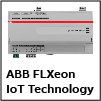|
November 2015 |
Babel Buster Network Gateways: Big Features. Small Price. |
|
Enhancing
Legacy Buildings with IoT
IoT
technology has the potential to provide more granular data to BAS and
EMS systems, to add intelligence at the edge.
|
|
| Articles |
| Interviews |
| Releases |
| New Products |
| Reviews |

|
| Editorial |
| Events |
| Sponsors |
| Site Search |
| Newsletters |

|
| Archives |
| Past Issues |
| Home |
| Editors |
| eDucation |

|
| Training |
| Links |
| Software |
| Subscribe |
 |
Note
to Automated Buildings Readers: Before I felt comfortable
writing this article, I needed to understand what the definition of IoT
is TODAY. What I found is a moving target. As many of you may have
noticed, the Internet of Things is certainly a buzzword and can be, or
often is, used to mean whatever is convenient for the presenting
organization. There is a lot of convergence and cooperation that needs
to occur before there is a universally accepted definition of IoT. It
will probably be even longer until we converge on a universal IoT
technology implementation. Food for thought – maybe we don’t need just
one implementation! Please use or ignore these paragraphs as you deem
appropriate, or substitute your own definition and see what conclusion
you arrive at.
First, I checked Wikipedia for a generic definition:
See https://en.wikipedia.org/wiki/Internet_of_Things for the complete article.
Then I searched Facilities.net for a more industry specific definition and found this:
But in all seriousness, the Internet of Things — which is a fancy way of talking about how smart devices can communicate with each other in more efficient, interoperable ways — is a very important concept to understand for any facility manager operating high-performance buildings. The IoT is how buildings will go from dumb, inefficient, and obsolete to smart, high-performance, and state-of-the-art.
See http://www.facilitiesnet.com/facilitiesmanagement/tip/What-Is-The-Internet-of-Things--32788 for the complete article.
Given this background, here is my assessment. The practical question is: What value does the Internet of Things bring to building occupants today? I think that there is very little immediate benefit to the occupants for existing buildings. The capability of current BAS systems to do something meaningful with this newfound goldmine of data is simply not there.
Longer term, as buildings are retrofitted and updated, or for new construction, the better instrumentation provided by IoT technology will result in improvements in indoor air quality, energy efficiency, and occupant comfort. In order to reap these benefits, there needs to be a paradigm shift in the way building systems are designed and in the way people interact with those systems.
IoT technology has the potential to provide more granular data to BAS and EMS systems, to add intelligence at the edge where incremental adjustments can be automatically applied, break down the traditional barriers between building infrastructure systems (HVAC control, lighting, access security, occupancy, etc.) and improve both occupant comfort and energy efficiency as the BAS, EMS, and other building systems learn how to utilize both the new sources of data and cooperate with the intelligence built into them. Layering on top of this the ability to store and analyze massive quantities of data through Big Data technologies and Analytics engines makes building metrics and benchmarking against like properties a reality. Turning this huge amount of data into actionable information further improves building efficiency and cost savings without sacrificing, and in fact probably improving, occupant comfort.
Our
S4 Open: BACnet-N2 Router has been providing access to data locked
inside of proprietary systems by publishing it to BACnet/IP where
modern on-site or cloud based applications can be used to turn raw
building data into actionable information. In the near future, options
will be offered in the S4 Open products to publish this data to
BACnet/WS and other Web Services based protocols as IoT standards come
into general acceptance by the industry. The S4 Open Appliance will act
as a proxy agent to present the information locked in proprietary BAS
systems as IoT data until the transition to new technology is completed
sometime in the future as building owners can afford to make those
investments. A purist would possibly not call this IoT data but I’m
willing to argue that legacy buildings must be included in this shift
in paradigm for the industry as a whole to gain the most benefit in the
shortest amount of time. The S4 technology will be there to do the
heavy lifting during the transition period.
[Home Page] [The Automator] [About] [Subscribe ] [Contact Us]